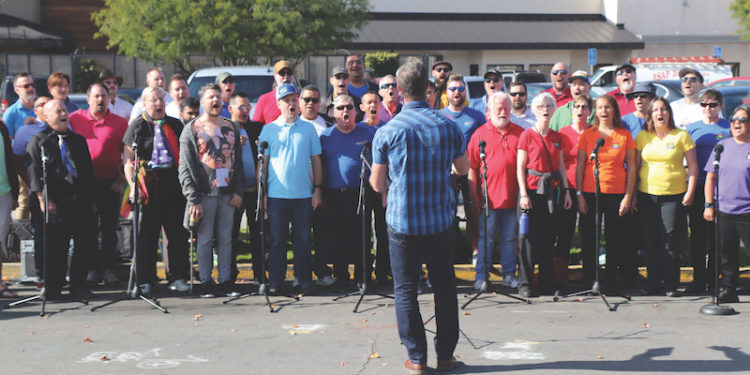Trans Talk with Connor
Connor Maddocks
Yesterday in beautiful Hillcrest, as hundreds of community folks gathered around, the very first rainbow crosswalk was unveiled in front of the Hillcrest Pride Flag/ Memorial. There were wonderful speakers and then the time came for the ribbon cutting. People jumped right in to be the first to do the catwalk on the crosswalk. I was amazed at how many people were there, from our high-level politicians to all our neighbors.

These are the kind of events I love to attend. Everyone is smiling, happy to be there, seeing old friends and meeting new ones. I am surrounded by happy voices. It is these moments that give me a glimpse of “what could be” if we just stopped looking for differences and started looking for what we have in common.
It has been a long, slow road for the trans community; to finally be at a point that these ceremonies and special events really are inclusive. When I see the trans flag on the sidewalk next to the Pride flag, I think it’s so beautiful, and I consider it inclusion. When I see the brown stripe on the flag, I see another example of inclusion. Now if we can just take it a step further. If it’s appropriate, do you have trans members in your group? If you are a sports team, do you have trans folks playing alongside you? I could name many more, but I think you get the gist of it. How about our folks of color? Have you made the road to your organization easy to follow? Is there bullying? I am so shocked to hear about bullying and threats being made to people right now, but why should I think it’s any different? Why do I believe that it’s only the trans community and the gay community, the people of color, nonbinary, etc. — it goes on and on.
I guess it happens any time with people from different experiences, or in our case what is it? Gays only want to hang out with other gays, lesbians with lesbians and trans folks, etc. You get the idea. I think we should have more inclusive social gatherings and events where people can really get to know each other. We could be real neighbors, real community members.
I remember when I first came to San Diego back in 2003. I came to help my parents; my mother was in a nursing home due to a massive stroke and my Dad, who at 84 was a stalwart companion, chose to go every day to sit by her side from 9 a.m. to 5 p.m., seven days a week. My job was to drive him there and stay because I had nothing better to do. I would go to physical therapy with her sometimes, watch her struggle. A month after I got here, she passed away. So now what would I do with my time? I went to the The Center and asked about transgender services. At the time, they didn’t even understand what I was talking about. I finally found a men’s group and it was wonderful. I asked them if they had ever tried to go to The Center to meet there; they said they were not welcome there and they would never go back.
A year later, we lost our meeting spot so what were we to do? Thankfully, I had been doing some transgender workshops with the Center’s public policy person, AJ Davis. Our workshops were great, and many trans folks came to them despite being told not to go near the center. I asked my men’s group to move to The Center but it took some serious work and promises. If they didn’t like it, we could leave. If they did like it, we could do more things. This is how I build community: reaching out to folks and getting them onboard. The Saturday group I believe was there first, then the FTM/SO group. Here we were in the LGBTQ Center, the men’s group was in the library, and the women’s group was meeting in the other group room. And no one talked after their meetings. It’s sad that all that time, now lost, we could have been meeting new friends and learning about what it is to be the L, G, B, T and the Q.
I am hopeful that the current trend of wanting to get to know and helping each other out, if practiced, can make a big change in our neighborhoods, and a huge change in our lives.









